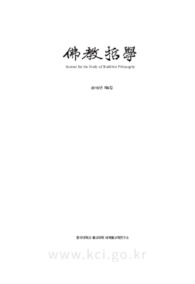

PARTNER
검증된 파트너 제휴사 자료
티벳 불교학파들의 유식에 대한 견해 (Views of Different Schools of Buddhism Towards Yogacārā in Tibet)
32 페이지
최초등록일 2025.04.15
최종저작일
2019.04

-
미리보기
서지정보
· 발행기관 : 동국대학교 세계불교학연구소
· 수록지 정보 : 불교철학 / 4권 / 173 ~ 204페이지
· 저자명 : 김태수
초록
유식학파에 대한 겔룩빠의 부정적 입장과 달리, 사꺄·까규·닝마빠는중관 귀류논증파의 구제론적 배타주의와 구별되는 친유가행 경향을지닌다. 조낭빠의 돌뽀빠와 같은 긍정적 그룹은 스스로를 대중관(大中 觀, ‘dbu ma chen po’)으로 칭하면서 유식학파의 내용을 희석시킨다. 이제의 통합과 자공(自空, rang stong)을 강조하는 겔룩빠와 달리, 닝마빠·사꺄빠·까규빠를 포함하는 이 그룹은 조낭빠와 유사한 맥락에서유식에 대해 포용주의적 견해를 보인다. 사꺄빠는 승의제의 정의를 유식학파 견해뿐만 아니라, 자성의 측면과 결합시킨다. 까규와 닝마 전통은 구성적(kataphatic) 구상에 입각해서 공성(Śūnyatā)의 반성적 기능을강조한다. 이는 참된 실재를 ‘모든 기술(記述)을 초월한 것’으로 보는닝마빠의 초월적 승의제론과 관련된다. 이 전통에서는 이제 간의 불가분성과 족첸(rdzogs chen)의 본래 청정(ka dag)을 강조하는 균형적 방식으로 여래장 이론을 해석한다.
특히 닝마빠의 미팜(Mipham)은 비종파적 관념에 의거하여 한층 포용주의적 해석을 취한다. 이로써 중관과 유식의 궁극적 견해는 다르지 않으며 동일한 궁극적 실재에 이른다고 제시한다. 이러한 점을 고려할때, 닝마빠의 접근은 왕축이 해석하듯이, 돌뽀빠의 긍정적 견해와 쫑카빠의 부정적 해석의 적절한 조화로 볼 수 있다. 이로써 닝마빠는 유식에 대한 구성적, 비구성적 견해의 중도를 표방한다. 교의 체계상 이제간의 통합을 제안한 중관의 귀류논증파에 의해 요의(nītārtha)로 간주되지는 않았지만, 닝마빠 또한 포용주의적으로 이제 간의 통합을 제시하는 것이다.
이와 같이 유식에 대한 티벳 여타 학파들의 태도는 긍정으로부터 포용에 이르기까지 각기 차이를 보이지만, 대부분 이제와 궁극적 목표 및이에 이르는 길에 대한 관념에서 친유식적 특성을 공유한다.
총괄적으로 볼 때, 티벳에서 중관과 유식의 자공, 타공(gzhan stong)설등을 둘러싼 오랜 이견(異見)은 사꺄촉댄이나 미팜 등이 말하듯, 궁극적 실재 문제 등과 관련하여 분석이나 직관과 같은 다른 방식을 중시하는 상호보완적 관점으로 이해할 수 있다영어초록
In contrast to the negative anti-Yogācara view of dge-lugs tradition, sa skya, bka’brgyud, and rnying ma schools show pro-Yogācara tendency without making a recourse to the soteriological exclusivism of Prāsaṅgika Mādhyamaka. These positive groups like those of Dolpo pa(Dolbu pa Shesrab rgyalmtshan, 1292~1361) in Jonang tradition de-cittamātrize the content of Yogācāra, preferring to be called as Great Mādyamika, while reinterpreting Yogācāra in light of the Tathāgatagarbha theory or the Great Mādhyamaka(dbu ma chen po) of the gzhan stong pa, as opposed to dge-lugs’s emphasis on the unity of two truths and on intrinsic emptiness(rang stong).
In a similar vein with Jonangpa, the Yogācāra view is held by the rnying ma, sa skya and bka’brgyud in a inclusivistic way. Sa skya combines the definition of ultimate truth not only with the aspect of Yogācāra view, but also with that of intrinsic reality(rang bzhin). The bka’brgyud and rnying ma tradition emphasizes the reflexive function of emptiness based on the kataphatic constructive imagination. It relates to rnying ma’s transcendent theory of ultimate truth while equating the real reality with the transcendence of all elaborations. It interprets Tathāgatagarbha theory in a more balanced way towards the Last and Middle cycles emphasizing the indivisibility of the two truths and the rdzogs chen notion of ‘primordial purity’(ka dag).
Further, Mipham of rnying ma school takes more inclusivistic interpretation based on non-sectarian idea, proposing that ultimate view in both Yogācāra and Mādhyamaka is not different while leading to the same ultimate reality. Considering these, as Wangchuk interprets, rnying ma’s approach can be interpreted as an adequate reconciliation of Dolpopa’s positive view and Tsong-kha-pa(1357~1419)’s negative interpretation, inducing a sublated way to both ‘kataphatic and apophatic’ views towards Yogacārā.
All in all, despite that Yogācara in a doxographical system was not considered to be of definitive meaning by Prāsaṅgika Mādhyamikas, who proposed a unity between the two truths, rnying ma pa also proposes a unity between the two truths with a more inclusive tone. Likewise, although the attitude of other schools in Tibet towards Yogācāra differed in varying degrees from positive to inclusivistic, they mostly share pro-Yogācāric traits grounded on the distinction between the two truths and their conceptions of the object of the ultimate or the way leading to it.
With reference to this, the question of self-emptiness and otheremptiness of Mādhyamaka and Yogācāra in Tibet could be understood as two complementary theories focusing on different aspects of true reality and etc., i.e., either stressing more on the apohatic/ analytical, or kataphatic/ intuitive way respectively, despite all these pros and cons towards Yogācāra.참고자료
· 없음태그
-
자주묻는질문의 답변을 확인해 주세요

꼭 알아주세요
-
자료의 정보 및 내용의 진실성에 대하여 해피캠퍼스는 보증하지 않으며, 해당 정보 및 게시물 저작권과 기타 법적 책임은 자료 등록자에게 있습니다.
자료 및 게시물 내용의 불법적 이용, 무단 전재∙배포는 금지되어 있습니다.
저작권침해, 명예훼손 등 분쟁 요소 발견 시 고객센터의 저작권침해 신고센터를 이용해 주시기 바랍니다. -
해피캠퍼스는 구매자와 판매자 모두가 만족하는 서비스가 되도록 노력하고 있으며, 아래의 4가지 자료환불 조건을 꼭 확인해주시기 바랍니다.
파일오류 중복자료 저작권 없음 설명과 실제 내용 불일치 파일의 다운로드가 제대로 되지 않거나 파일형식에 맞는 프로그램으로 정상 작동하지 않는 경우 다른 자료와 70% 이상 내용이 일치하는 경우 (중복임을 확인할 수 있는 근거 필요함) 인터넷의 다른 사이트, 연구기관, 학교, 서적 등의 자료를 도용한 경우 자료의 설명과 실제 자료의 내용이 일치하지 않는 경우
문서 초안을 생성해주는 EasyAI
